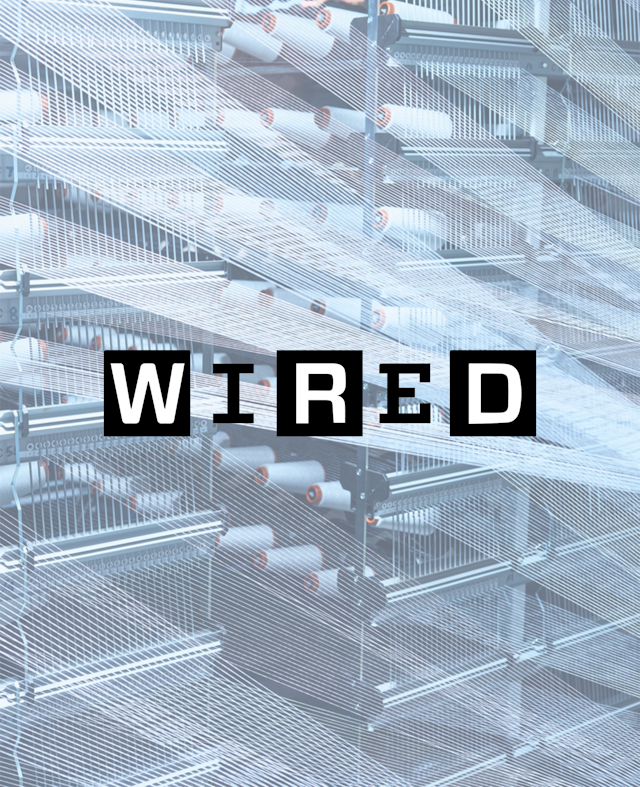Our Impact
3D Weaving for the Future

Our Earth is overheating, and our moment calls for a paradigm shift. An upending of the way we make, sell, and consume apparel. This is what unspun is all about.
The time we have to decarbonize the planet is finite --ecologically and legally. In 2026, the EU will begin tightening environmental regulations toward the goal of net-zero carbon emissions by 2050. To keep pace, brands need to invest in cleaner technology and streamlined processes.

One of the most effective measures the fashion industry can take to minimize its carbon footprint is to stop wasting so much. And unsold inventory is a massive source of waste. In 2022 alone, warehouses across the US were bursting at the seams with excess merchandise worth a record $732 billion.
The mismatch between what brands offer and what consumers want exacerbates overproduction. Provided profit is the fashion industry's most direct path to sustainability, preventing the accumulation of dead stock is the best vehicle for getting there.
On-demand manufacturing is a new operational model focused on reducing inventory, increasing agility, decreasing lead times, and utilizing digitization to its full extent.
How can Vega™ help?
Produce garments in accordance with demand. That’s the business model. And do so in a localized fashion. Applied across the industry, we can reduce inefficiencies at scale.
Vega™ is the linchpin of this model. By automating manufacturing, it eliminates cutting waste and overstock. And by localizing manufacturing, it maintains just-in-time fulfillment.
None of this has been possible before. Where business as usual struggles to imagine a solution to our climate crisis, Vega™️'s 3D weaving technology implements one.

Climate impact
The apparel industry produces 2.1 billion tons of CO2, accounting for 4% of global carbon emissions. The processes highlighted in orange in Figure 1 indicate areas of the supply chain where producing with Vega™️ has the potential to reduce impact.
By compacting the supply chain, Vega™️ removes opportunities to expend carbon throughout the typical fashion supply chain. Obviating the need to ship fabric to finishing facilities and factories, and garments to warehouses, Vega™️ achieves a significant reduction in CO2 emissions per year for any brand that uses it.
To fully grasp the climate potential of Vega™️, we're currently conducting a comprehensive Life Cycle Assessment (LCA) of the products it produces. With this, we'll be able measure the potential environmental impact of Vega products for the duration of their extended life cycle.
Localized and automated production in microfactories
The factory of the future. Vertically integrated, strategically operated, and locally situated. From concept to delivery, we centralize all stages of manufacturing under one roof: design, production, finishing, even warehousing.
And we do this in proximity to the markets we serve. By using a highly digitized production process to make output quality and quantities more precise, a microfactory proves viable even in high-cost locales. Moreover, by simplifying the logistics of bringing a finished product to market, it diminishes the monetary and the carbon costs of transportation.
Globally oriented, but locally impactful, our first microfactory and design studio is in Oakland, CA, with plans to expand to Europe by the end of 2024.


Hyper-circularity
To care for our environment and allow new generations to thrive, we should design what we wear for greater use.
Our founding vision is one wherein yarn may be woven into an article of clothing, unspun back into yarn, and woven into clothing again. Wherein the continuous and seamless construction of a garment preserves yarn length so as to make recycling it sans reprocessing feasible.
As it exists today, circularity in fashion is theoretical. Its promise is hemmed in by practices that hinder its implementation.
We're working to make circularity actionable. To unravel the fashion narrative, with technology that makes circularity scalable.
Discarding, downcycling, recycling. These are the solutions of cut-and-sew manufacturing. Our Vega™️ 3D weaving technology presents the solution of the future. The solution of reuse.
Learn more about our
Impact
Process
Vision
Stories







